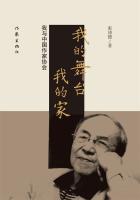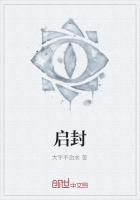历史的一幕-A scene of history
1945年第二次世界大战结束以后,一部分日本战犯被关押在前苏联远东伯力(哈巴罗夫斯克)地区的战俘营中。
1949年12月16日至1950年2月17日,中国派出了以毛泽东主席为首的访苏代表团。在苏期间,从维护中华人民共和国的主权考虑,双方决定将部分关押在伯力地区的日本战犯引渡到中国关押,接受中国政府的审判。
中国政府接到苏联政府的照会后,在周恩来总理指示下,成立了以当时东北人民政府主席高岗为组长,副主席林枫为副组长,以东北司法部长高崇民、公安部长汪金祥、卫生部长王文新为成员的东北战犯工作领导小组。同时,指派中华人民共和国司法部长史良到东北为关押战犯选址,全权办理相关要务。
1950年2月,司法部长史良同志到达东北后,在东北司法部有关人员陪同下,有选择地走访了东北各大小监狱,综合交通、安全、保密设施等诸多因素,最后选择确定了坐落于抚顺市城郊的辽东省第三监狱,并将其改建为东北战犯管理所。
同年6月,根据中央政府指示,从东北公安部、司法部、卫生部和公安三师抽调145名干部组成东北战犯管理所工作队伍。
7月14日,由东北人民政府外事处处长陆羲率领战犯管理所有关人员和两个连的兵力日夜兼程奔赴中苏边界城市黑龙江省绥芬河等待接收日本战犯。17日晚,押运第一批日本战犯的专列由苏联驶抵绥芬河火车站,18日清晨中苏双方开始办理移交手续。随即押运日本战犯的专列由绥芬河市火车站正式起动,至7月21日凌晨3点到达抚顺城火车站。然后乘汽车,在武装警察押运下到达战犯管理所。
此次,由苏联移交给中国的日本战犯共计为969人,以后,从内地接收4人,又从太原战犯管理所转监接收9人,抚顺战犯管理所共计关押日本战犯982人。在这批日本战犯中,按体系分军队系统667人,宪兵系统116人,特务警察系统155人,行政官吏44人。按军阶分为将级35人,校级125人,尉级以下822人。
这些战犯无论职位高低,均在日本侵略中国期间,公然违反国际法准则和人道主义原则,实行杀光、烧光、抢光的三光政策,对中国人民犯下了破坏和平罪、战争罪、违犯人道罪。这批战争罪犯给中国人民造成了极大灾难,据不完全统计,在他们主谋和参与之下,共计烧毁和破坏房屋7800多处,44000余间;掠夺粮食370多万吨;掠夺煤炭2220多万吨;掠夺钢铁等金属300多万吨;杀害和平居民和被俘人员857000多人;并在冀东和黑龙江等地制造了潘家戴庄、北疃、巴木东、三肇等30余起大惨案,给中国人民造成重大伤害,犯下了罄竹难书的滔天罪行。
After conclusion of World War II in 1945, some of the Japanese war criminals were locked up in the war prisoners camp in Khabarovsk (Boli) in the Far Eastern region of the former Soviet Union. From December 16, 1949 to February 17, 1950, China sent out a visiting Chinese Delegation headed by Chairman Mao Zedong to the Soviet Union. While in the Soviet Union, considering the need to safeguard the sovereignty of the People"s Republic of China, both sides decided to extradite part of the Japanese war criminals detained in the Boli region to China. They were then imprisoned in China and tried by the Chinese government.
After receiving notes from the Soviet government, and responding to the instructions of Chinese Premier Zhou Enlai, the Chinese government set up a northeast war criminal work leading group with the then Gao Gang, chairman of the then Northeast People"s Government as the group leader, vice-chairman Lin Feng as the deputy group leader and Gao Chongmin, director of the northeast judicial department; Wang Jinxiang, director of the public security department and Wang Wenxin, director of the health department, as members. At the same time, Shi Liang, Minister of Justice of the People"s Republic of China, was sent to the northeast region for selecting site for putting war criminals behind bar and was given full power to handle related important affairs.
After arriving in the northeast in February 1950, Minister of Justice Shi Liang, accompanied by office workers of the Northeast Judicial Department, selectively visited various sizes of prisons and comprehensive communications, security and confidential facilities in the northeast, considering these many factors, she finally chose and decided on the east Liaodong Province No.3 Prison on the outskirts of Fushun City, and rebuilt it into the Northeast War Criminals Management Center.
Acting upon the instructions of the Central Government, 145 cadres were transferred in June that same year from the public security, judicial and health departments and the No.3 Public Security Division to form a working team for the Northeast War Criminals Management Center.
On July 14, Lu Xi, director of the Foreign Affairs Office of the Northeast People"s Government, led related personnel of the war criminals management center and a military force of two companies to hurry day and night to Heilongjiang Province"s Suifenhe City, a city along the Chinese and Soviet borders, waiting there for acceptance of Japanese war criminals. On the evening of July 17, the special train that transported the first batch of Japanese war criminals under escort moved from the Soviet Union into the Suifenhe Railway Station. On the morning of July 18, the two sides of China and the Soviet Union began to perform the transferal formalities. Then, the special train transporting Japanese war criminals formally pulled out of Suifenhe Railway Station and arrived at the Fushun Railway Station at 3 o"clock on the morning of July 21. And then the war criminals, changed to take buses and under armed police escort, arrived at the war criminals management center.
The number of Japanese war criminals transferred from the Soviet Union to China this time totaled 969, later, four were accepted from the hinterland and nine from the Taiyuan War Criminals Management Center, then, the number of Japanese war criminals detained in Fushun War Criminals Management Center totaled 982. Among this batch of Japanese war criminals, classified in accordance with system, 667 belonged to the army system, 116 to the gendarme system, 155 to the special task police system and 44 to the administrative officials. Classified in accordance with military ranking, 35 people belonged to the rank of general, 125 to the rank of field officer and 822 to the rank of junior officer and below.














